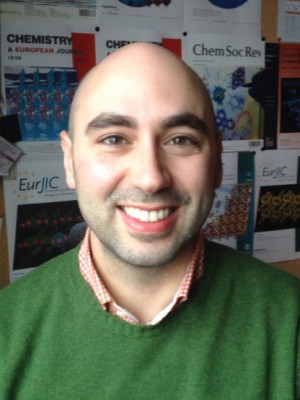abstract
Novel water-soluble zinc(II) phthalocyanines (ZnPc) peripherally substituted with 4-dimethylaminopyridine (DMAP) units (ZnPc 1-2) and the corresponding quaternized derivatives (ZnPc 1a-2a) were synthesized and their photodynamic inactivation (PDI) efficiency against a Gram-negative bacterium, a recombinant bioluminescent Escherichia coli strain either in planktonic or biofilm form, was investigated. The analysis of the photophysical properties revealed that the increase in the number of DMAP units on ZnPc shifted the absorption and emission band in aqueous media to the red region. The presence of multi-positive charges on ZnPc derivatives prevented aggregation and enhances the solubility in aqueous media. The quaternized derivatives ZnPc 1a and 2a displayed good stability and promising efficacy to generate singlet oxygen (O-1(2)). The affinity of the amphiphilic ZnPc 1-2 and quaternized ZnPc 1a-2a to planktonic bacterial cells corresponded to an average uptake of approximate to 10(6)PS molecules.CFU-1. The PDI assays conducted with planktonic cells and biofilms of E. coli show that irradiation with red or white light (150mW.cm(-2)) in the presence of 20M of ZnPc derivatives caused an effective inactivation. ZnPc 1a and ZnPc 2a exhibited the highest inactivation efficiency, particularly of the planktonic form, causing a 5log-scale (99.99%) reduction in bioluminescence. The inactivation factor for biofilms was 99% (2log). ZnPc 1a and ZnPc 2a can be regarded as promising photosensitizers for the photodynamic inactivation of Gram-negative bacteria.
keywords
PHOTODYNAMIC ANTIMICROBIAL CHEMOTHERAPY; INACTIVATION; BACTERIAL; THERAPY; MECHANISMS; RESISTANCE; OXIDATION; MEMBRANE; VIRUSES; SYSTEMS
subject category
Chemistry
authors
Lourenco, LMO; Rocha, DMGC; Ramos, CIV; Gomes, MC; Almeida, A; Faustino, MAF; Paz, FAA; Neves, MGPMS; Cunha, A; Tome, JPC
our authors
acknowledgements
Thanks are due to FCT/MEC for the financial support to QOPNA (FCT UID/QUI/00062/2019), CESAM (FCT UID/MAR/LA0017/2019), CICECO-Aveiro Institute of Materials (FCT UID/CTM/50011/2019) and CQE (FCT UID/QUI/0100/2019) research units, and to the FCT projects (PTDC/QUI-QOR/31770/2017 and P2020-PTDC/QEQ-SUP/5355/2014), through national founds (PIDDAC) and where applicable co-financed by the FEDER-Operational Thematic Program for Competitiveness and Internationalization-COMPETE 2020, within the PT2020 Partnership Agreement. Thanks are also due to the Portuguese NMR and Mass Networks. C. I. V. R. and M. C. G. thank FCT for the Post-doctoral grant (SFRH/BPD/85902/2012) and PhD grant (SFRH/BD/88334/2012), respectively. We acknowledge the financial support from FCT/MCTES and Portugal 2020 to the RNEM (LISBOA-01-0145-FEDER-402-022125) and Node IST-Campus Alameda for facilities. We also would like to thank Dr. Venkatramaiah Nutalapati for insightful discussions concerning the synthesis protocols.




